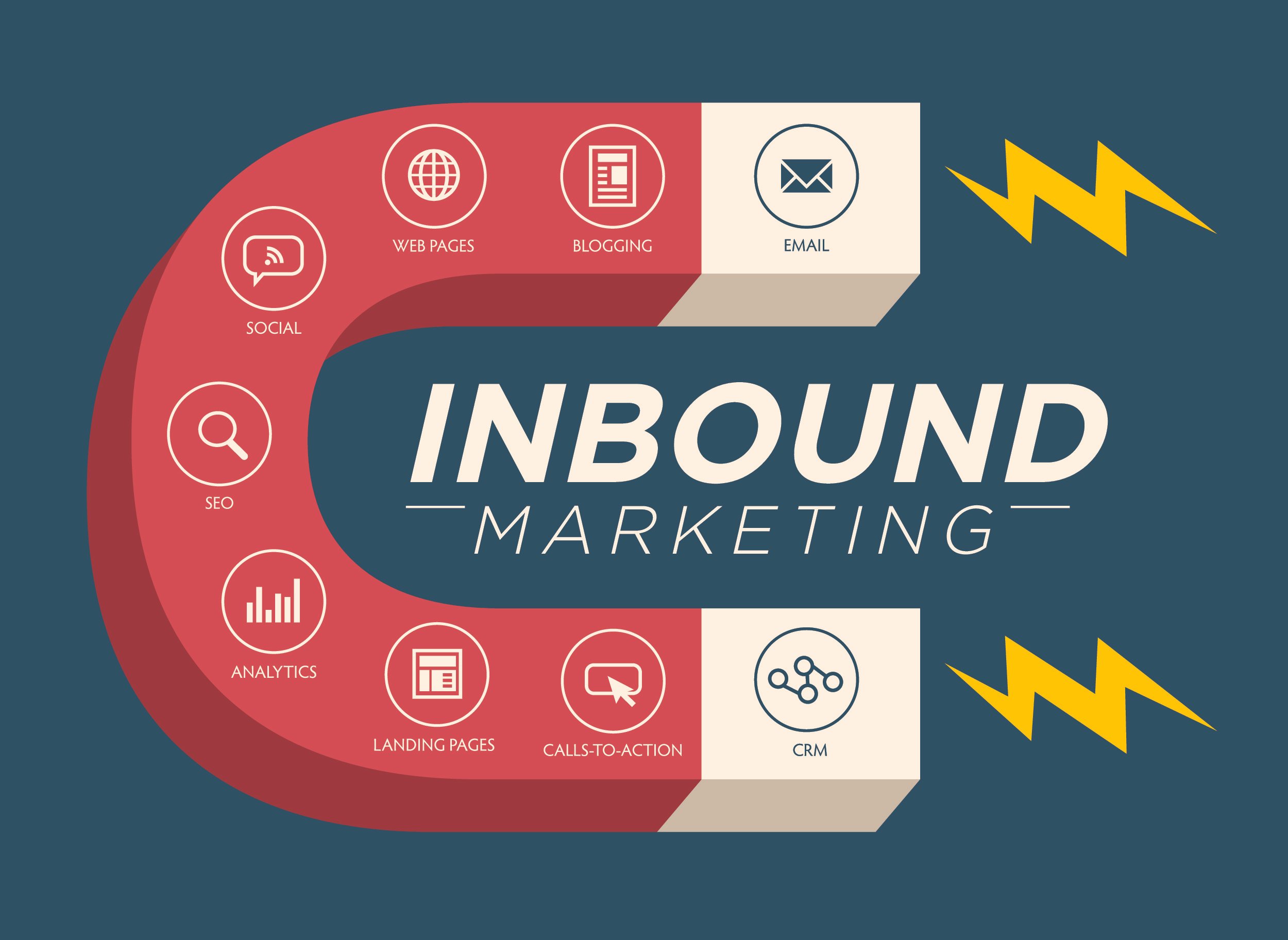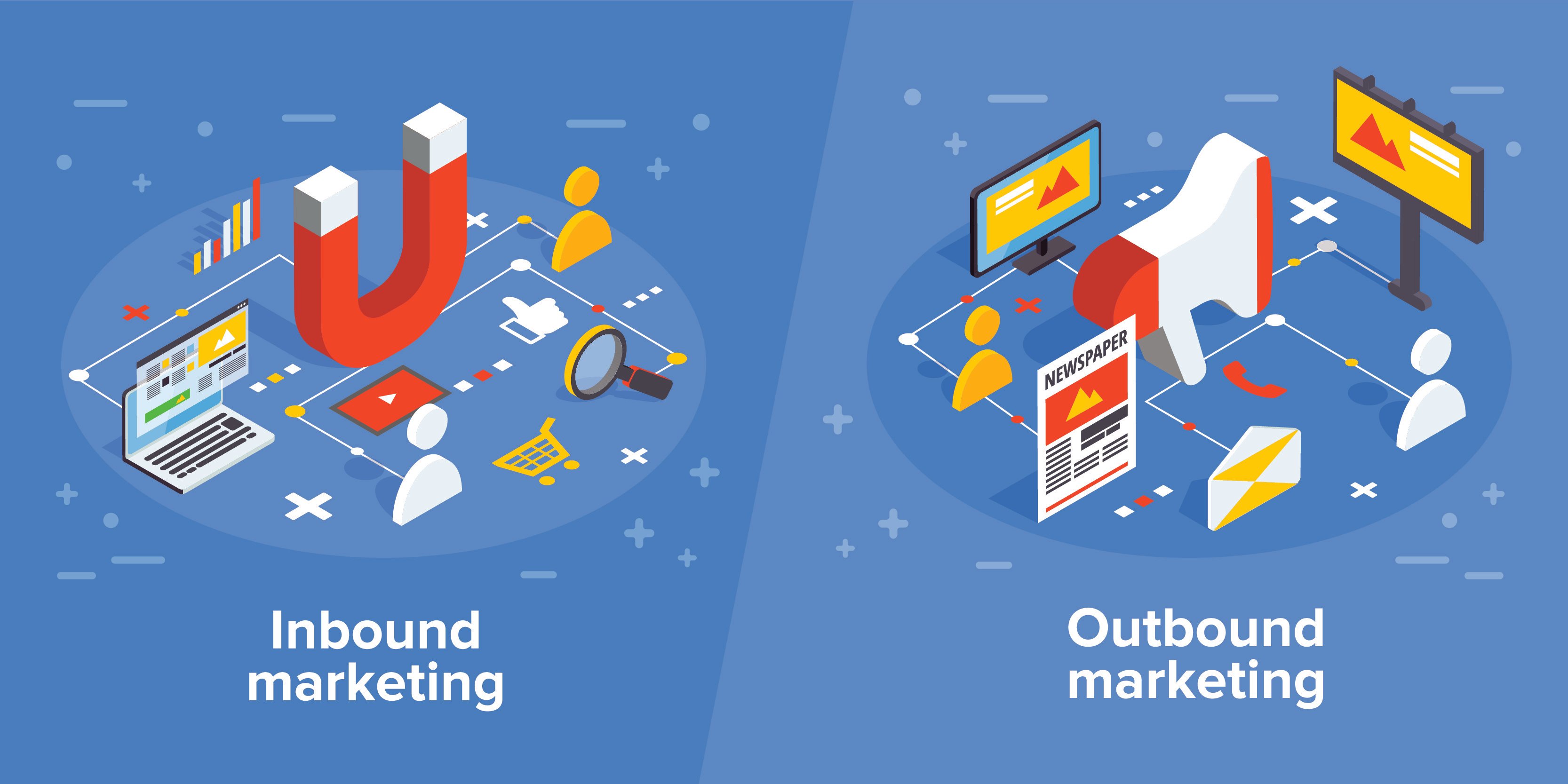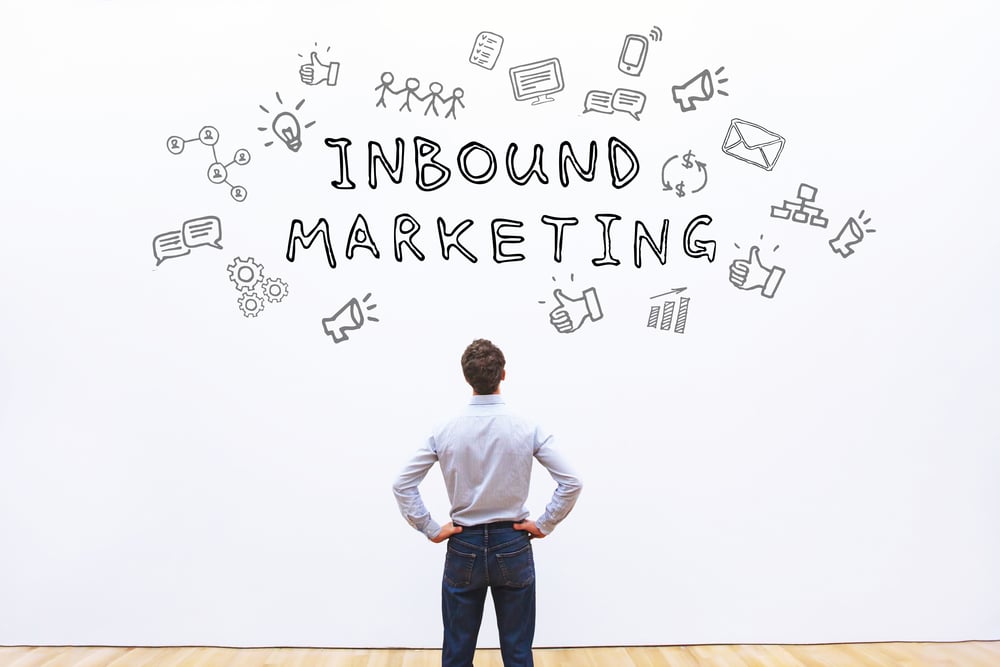How to Get Started with Inbound Marketing for Healthcare

For decades, healthcare providers have been leveraging traditional marketing tactics to generate leads and turn them into loyal patients. Digital marketing has revolutionized your ability to find potential patients and build a connection that keeps them with the clinic for years.
Both inbound and outbound marketing tactics can achieve similar goals. However, the former is a much more cost-effective way to do this while building the brand and cementing loyal relationships in the healthcare industry.
Let’s take a closer look at inbound marketing strategies for your healthcare practice.
Inbound Marketing Versus Outbound Marketing

Inbound marketing is a set of tactics that help your target audience become aware of your services and eventually decide to use them. It targets patients who are looking for information and assistance and reels them in with the content, paid ads, and messages.
This type of marketing is also called “pull” marketing because it pulls the audience in by piquing their interest and providing valuable information.
Outbound marketing, also known as “push” marketing, pushes the message out to a wide audience in the hope that the right segments act upon it. Traditional outbound marketing tactics are TV ads, billboards, and cold calling.
The key difference between inbound and outbound marketing is targeting quality. An inbound marketing strategy reaches out to a specific target audience while outbound marketing aims at a wide pool of people.
For medical practices, this makes outbound marketing more expensive and less effective than inbound marketing. In fact, acquiring inbound leads costs 61% less than attracting outbound leads.
Understanding Inbound Marketing for Healthcare
Inbound marketing tactics address different stages of the patient’s journey (a.k.a. buyer’s journey in non-medical space), from the moment they go online to conduct research to the point of becoming a loyal audience.
To implement these tactics, you need to study your target audience and design a patient persona. A patient persona is a detailed description of your average target patient that includes pain points, demographic data, challenges, and any other information you can find.
It’s normal for healthcare practices to have several patient personas and develop inbound marketing strategies for each one of them.
The four stages of an inbound marketing campaign include:
1. Attract
This initial stage of inbound marketing focuses on patients when they start searching for content to solve a problem. At this stage you:
- Create valuable content around specific keywords.
- Work on traditional search engine optimization (SEO).
- Use local SEO.
These tactics attract potential patients to your website where you can start implementing conversion tactics.
2. Convert
At this stage, you need the potential patient to take action by sharing their contact details. To do this, you can:
- Share premium-level content in exchange for contact information
-
Create useful and easy-to-navigate landing pages
- Design CTAs and contact forms.
The patient learns about possible solutions to their problem and starts considering your practice as a problem-solver.
3. Close
At this stage, you convert the visitor into a patient. You already have their contact information, so you can design a personalized message and share it through:
- Email marketing
- Social media marketing
- Phone calls
The offer you provide at the closing stage cements the patient’s decision to use your practice as a solution to their problem.
4. Delight
Once a person becomes your patient, you need to continue implementing marketing tactics. The goal is to turn the patient into your brand ambassador and increase their lifetime value (how much money they will spend in your clinic). This includes:
- Follow-up emails
-
Surveys
- Request for reviews
You can consider offering discounts to your existing patients to improve their loyalty and make sure they keep coming back to your clinic.
7 Inbound Marketing Strategies for Healthcare Practices
To get started with healthcare inbound marketing and achieve the desired ROI (Return on Investment), you can rely on these top practices.
1. Content Marketing
Content marketing is a set of tactics that include content creation, distribution, and promotion. Today, 81% of inbound marketers actively use content marketing to achieve their goals.
- Attract – high-quality content with properly implemented keywords puts your website on top of the SERPs (Search Engine Results Pages) and generates clicks.
- Convert – you can offer premium content (e-books, case studies, research) in exchange for contact details.
-
Close –valuable personalized content drives the potential patient to make a decision to work with your clinic.
- Delight – excellent content maintains the patient’s interest and drives the desire to share the experience with others.
With a stellar content strategy, you don’t just turn leads into patients. You build your practice’s credibility and trustworthiness that help turn it into an industry leader.
2. Search Engine Optimization
Search engine optimization (SEO) is a set of tactics aimed at putting your website on top of the SERPs.
- Attract - when the patient begins the search for information, SEO makes sure they see your website in the search results.
- Convert – SEO tactics make your website easy to use and navigate, helping the patient take action.
- Close – at this point, data collected through SEO marketing efforts helps you design a personalized conversion message.
- Delight – SEO tactics continue working after conversion to help your existing patients share their experience and implement word-of-mouth marketing.
SEO is an organic marketing tactic that doesn’t start working immediately. However, its gradual effect contributes to the success of your inbound marketing plan.
3. Social Media Marketing
Social media marketing is a set of organic and paid tactics aimed at generating leads, converting, and retaining patients through social media platforms.
- Attract – social media platforms have excellent paid ad targeting capabilities that bring specific segments of the audience to your website or social media pages.
-
Convert – high-quality content and detailed information make it easy for patients to take action and share data on social media.
- Close – social media offers a great opportunity for one-on-one communications and conversion strategies.
- Delight – after conversion, you can continue communicating with patients through social media, making offers, learning about their new pain points, and offering opportunities for acting as brand ambassadors.
According to a 2021 HubSpot’s State of Marketing Report, almost 70% of inbound marketers name social media as their primary approach to marketing.
4. Web Design
High-quality web design is the pillar of any inbound marketing strategy. Your website plays a major role at each stage of the patient’s journey.
- Attract – you need a well-designed website to help the lead find it on the SERPs.
- Convert – the conversion process usually happens on the website. That’s where you can arrange your content, provide CTAs, offer gated content in exchange for contact details, and more.
- Close – a website provides an opportunity to offer relevant personalized content, provide support through live managed chat, make appointments, and more.
- Delight – a well-designed website makes it easy for your patients to promote your practice, leave reviews, and share testimonials.
No matter how excellent your inbound marketing tactics are, a poorly-designed website hinders the entire strategy.
5. Conversion Rate Optimization
Conversion rate optimization (CRO) is a set of tactics that increase the number of users who take action on your website.
-
Attract – making sure your content is relevant to the user’s search.
- Convert – giving visitors an opportunity to find solutions to their pain points and take action without making an effort.
- Close – making it easy to become your patient by offering solutions, straightforward forms, quick consultations, and answers to questions.
- Delight – emphasizing value and credibility as well as continuing to learn more about your patients to improve patient personas and ensure retention.
You would need to analyze your conversion rate continuously to understand which CRO practices work best for your website.
6. Email Marketing
Email marketing is an inbound marketing practice with the highest ROI. It aims at creating a personal connection with the patient and accompanies them through the latest stages of the journey.
- Convert – email marketing can nurture leads towards a close.
- Close – you can use email marketing to drive your offer through to the patient via a personalized channel.
- Delight – through email, you continue re-engaging patients, sending offers, providing valuable content, and improving your credibility
Email marketing is a valuable tool that helps improve customer relationship management tactics.
7. Video Marketing
Video marketing is an important subcategory of content marketing. It involves using video content to:
- Create a personal connection
-
Educate the patient
- Offer services
Videos are excellent for explaining complex medical concepts to patients and helping them get to know your staff.
You can promote high-quality videos through paid search ads, paid social, and organic marketing. They help with brand awareness, patient retention, and word-of-mouth marketing.
Improve Healthcare Inbound Marketing with a Patient Acquisition Platform
The quality of your inbound marketing strategy depends on the tools you use. Without the latest healthcare marketing technologies, it’s nearly impossible to stay ahead of the competition.
A patient acquisition platform is software designed specifically to market your healthcare practice, attract leads, convert them into patients, retain the audience, implement top practices, analyze your efforts, provide real-time patient support, and much more.
To find out how a patient acquisition platform can help your practice succeed, request a free demo today.


